Side effects of barium swallow test. Barium Swallow Test: Comprehensive Guide to Procedure, Side Effects, and Costs
What is a barium swallow test. How does it help diagnose gastrointestinal disorders. What should patients expect during the procedure. Are there any potential side effects or risks associated with a barium swallow. How much does a barium swallow test typically cost.
Understanding the Barium Swallow Test: Purpose and Procedure
A barium swallow test is a specialized X-ray examination designed to provide detailed images of the upper gastrointestinal (GI) tract. This diagnostic procedure involves ingesting a chalky, white substance called barium, which coats the inner lining of the esophagus, stomach, and upper part of the small intestine. The barium appears opaque on X-ray images, allowing healthcare professionals to visualize the structure and function of these organs.
The primary purpose of a barium swallow test is to help diagnose various conditions affecting the upper GI tract. These may include:
- Hiatal hernias
- Inflammation of the esophagus or stomach
- Structural abnormalities or blockages
- Swallowing difficulties (dysphagia)
- Gastroesophageal reflux disease (GERD)
- Ulcers
- Tumors (both benign and malignant)
During the procedure, patients are typically asked to swallow a barium-containing liquid while a series of X-ray images or a continuous X-ray beam (fluoroscopy) captures the movement of the substance through the upper GI tract. This allows healthcare providers to assess both the structural integrity and functional aspects of these organs.
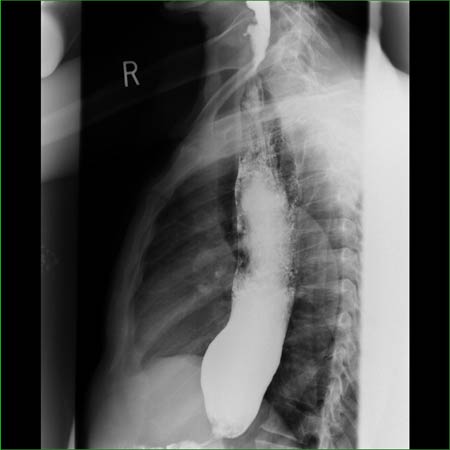
Preparing for Your Barium Swallow Test: Essential Guidelines
Proper preparation is crucial for ensuring accurate results from a barium swallow test. Patients are generally instructed to follow these guidelines:
- Fast for at least 6 hours prior to the procedure
- Avoid drinking any liquids for 2 hours before the test, except for small sips of water if necessary
- Inform your healthcare provider about any existing medical conditions or medications
- Remove all jewelry and change into a medical gown before the test
Are there any conditions that might prevent someone from undergoing a barium swallow test? Yes, certain medical conditions may increase the risk of complications and potentially disqualify a patient from the procedure. These include:
- Esophageal or bowel perforations
- Severe bowel obstructions
- Extreme difficulty swallowing
- Severe constipation
It’s essential to discuss any concerns or pre-existing conditions with your healthcare provider before scheduling the test.

The Barium Swallow Procedure: Step-by-Step Breakdown
Understanding what to expect during a barium swallow test can help alleviate anxiety and ensure a smooth experience. Here’s a detailed breakdown of the procedure:
- Arrival and preparation: Check-in at the radiology facility and change into a medical gown.
- Initial positioning: A radiology technician will position you on an X-ray table.
- Preliminary X-rays: Standard X-rays of your heart, lungs, and abdomen may be taken.
- Barium ingestion: You’ll be given a barium-containing liquid to drink.
- X-ray imaging: Single X-rays, a series of X-rays, or fluoroscopy will be used to capture images as the barium moves through your upper GI tract.
- Repositioning: You may be asked to change positions or hold your breath at certain times to obtain clear images.
- Completion: The procedure typically takes about 30 minutes to complete.
How soon can patients expect to receive their results? Results are usually available within several days of the procedure. Your healthcare provider will review the images and discuss the findings with you during a follow-up appointment.

Potential Side Effects and Risks of Barium Swallow Tests
While barium swallow tests are generally considered safe, it’s important to be aware of potential side effects and risks. Common side effects may include:
- Constipation: The barium can cause temporary constipation in some individuals.
- White-colored stools: Barium may cause stools to appear white or light-colored for a day or two after the test.
- Nausea: Some patients may experience mild nausea during or after the procedure.
- Abdominal discomfort: Temporary bloating or cramping may occur.
In rare cases, more serious complications can arise. These may include:
- Allergic reactions to barium or other components of the contrast material
- Aspiration of barium into the lungs, potentially leading to inflammation or infection
- Bowel obstruction, particularly in patients with pre-existing GI issues
How can patients minimize the risk of side effects? Drinking plenty of water after the procedure can help flush the barium from your system and reduce the likelihood of constipation. If you experience severe abdominal pain, fever, or difficulty passing stools following the test, contact your healthcare provider immediately.

Cost Considerations: Understanding the Financial Aspects of Barium Swallow Tests
The cost of a barium swallow test can vary significantly depending on several factors, including:
- Geographic location
- Healthcare facility
- Insurance coverage
- Additional tests or procedures performed in conjunction with the barium swallow
On average, patients can expect to pay between $250 and $1,000 for a barium swallow test without insurance. However, with insurance coverage, out-of-pocket costs may be significantly reduced.
How can patients manage the financial aspect of a barium swallow test? Consider these strategies:
- Check with your insurance provider to understand your coverage and potential out-of-pocket expenses
- Inquire about cash pay discounts or payment plans offered by the healthcare facility
- Compare prices at different radiology centers in your area
- Discuss the necessity of the test with your healthcare provider to ensure it’s the most appropriate diagnostic tool for your situation
Interpreting Barium Swallow Test Results: What to Expect
After your barium swallow test, a radiologist will analyze the images and provide a detailed report to your referring physician. The results may reveal various conditions or abnormalities, such as:

- Structural issues in the esophagus, stomach, or upper small intestine
- Abnormal narrowing (strictures) or widening of the esophagus
- Presence of tumors or ulcers
- Signs of inflammation or infection
- Functional problems, such as difficulties with swallowing or reflux
How should patients prepare for their follow-up appointment to discuss results? Consider these tips:
- Write down any questions or concerns you have about the test or potential findings
- Bring a list of your current medications and any symptoms you’ve been experiencing
- Consider asking a family member or friend to accompany you for support and to help remember important information
Remember that your healthcare provider is the best source of information for interpreting your specific results and determining any necessary next steps or treatment options.
Alternatives to Barium Swallow Tests: Exploring Other Diagnostic Options
While barium swallow tests are valuable diagnostic tools, there are alternative procedures that may be recommended in certain situations. These include:

- Endoscopy: A flexible tube with a camera is inserted through the mouth to directly visualize the upper GI tract.
- CT scan: Computed tomography uses X-rays and computer processing to create detailed cross-sectional images of the body.
- MRI: Magnetic resonance imaging uses powerful magnets and radio waves to produce detailed images of soft tissues.
- Esophageal manometry: This test measures the strength and coordination of esophageal muscles during swallowing.
- pH monitoring: A small device is used to measure acid levels in the esophagus over a 24-hour period.
How do healthcare providers determine which diagnostic test is most appropriate? The choice of test depends on various factors, including:
- The specific symptoms and suspected conditions
- The patient’s overall health and medical history
- The need for functional vs. structural information
- The risks and benefits associated with each procedure
Discussing these options with your healthcare provider can help ensure you receive the most appropriate and informative diagnostic evaluation for your individual situation.

Special Considerations for Different Patient Groups
Certain patient populations may require special considerations when undergoing a barium swallow test. These include:
- Pregnant women: While the radiation exposure from a barium swallow test is generally low, alternative imaging methods may be preferred during pregnancy when possible.
- Children: Pediatric patients may require modified procedures or special preparation techniques to ensure their comfort and cooperation during the test.
- Elderly patients: Older adults may have increased risks of aspiration or difficulty swallowing the barium mixture, requiring close monitoring during the procedure.
- Patients with allergies: Those with known allergies to barium or other contrast materials should inform their healthcare provider before the test to discuss alternative options or necessary precautions.
How can healthcare providers ensure the safety and comfort of these special patient groups? Tailored approaches may include:
- Using lower radiation doses or alternative imaging techniques when appropriate
- Employing child-friendly preparation methods and environments for pediatric patients
- Providing additional support and monitoring for elderly patients during the procedure
- Conducting thorough pre-test screenings to identify potential allergies or contraindications
Advances in Barium Swallow Testing: New Technologies and Techniques
The field of diagnostic imaging is constantly evolving, and barium swallow tests are no exception. Recent advancements have improved the accuracy, efficiency, and patient experience of these procedures. Some notable developments include:

- Digital radiography: This technology allows for faster image acquisition and processing, reducing radiation exposure and improving image quality.
- 3D imaging: Advanced software can create three-dimensional reconstructions of the upper GI tract, providing more detailed views of anatomical structures.
- Dual-energy subtraction: This technique can help differentiate between barium and soft tissues, enhancing the visibility of subtle abnormalities.
- Low-dose protocols: Optimized imaging techniques and equipment settings can minimize radiation exposure without compromising diagnostic quality.
- Improved contrast agents: New barium formulations may offer better coating properties and patient tolerability.
How do these advancements benefit patients and healthcare providers? The potential advantages include:
- More accurate diagnoses and fewer false positives or negatives
- Reduced need for repeat examinations or additional tests
- Improved patient comfort and reduced procedure times
- Lower radiation exposure, particularly important for patients requiring multiple examinations
- Enhanced ability to detect subtle abnormalities or early-stage conditions
As technology continues to advance, patients can expect even more refined and patient-friendly barium swallow test experiences in the future.

Post-Procedure Care and Follow-Up
After completing a barium swallow test, proper post-procedure care is essential to minimize potential side effects and ensure accurate results. Here are some important guidelines for patients to follow:
- Hydration: Drink plenty of water to help flush the barium from your system and prevent constipation.
- Diet: Resume your normal diet unless otherwise instructed by your healthcare provider.
- Monitoring: Pay attention to your bowel movements and report any unusual changes or persistent constipation to your doctor.
- Activity: Most patients can return to normal activities immediately after the test, but follow any specific instructions provided by your healthcare team.
- Medication schedule: Resume your regular medication regimen as directed by your physician.
How long should patients expect to experience barium-related effects? The barium typically passes through the digestive system within 24 to 72 hours. During this time, you may notice white or light-colored stools, which is normal and not cause for concern.

What follow-up steps should patients anticipate after a barium swallow test?
- Results review: Schedule a follow-up appointment with your referring physician to discuss the test results and any necessary next steps.
- Additional testing: Based on the findings, your doctor may recommend further diagnostic procedures or treatments.
- Symptom monitoring: Keep track of any ongoing or new symptoms related to your digestive system and report them to your healthcare provider.
- Lifestyle modifications: Your doctor may suggest dietary changes or other lifestyle adjustments based on the test results.
By following these post-procedure guidelines and maintaining open communication with your healthcare team, you can ensure the most comprehensive and effective follow-up care after your barium swallow test.
What to Expect, Side Effects, and Cost
Barium Swallow: What to Expect, Side Effects, and Cost
- Health Conditions
- Featured
- Breast Cancer
- IBD
- Migraine
- Multiple Sclerosis (MS)
- Rheumatoid Arthritis
- Type 2 Diabetes
- Articles
- Acid Reflux
- ADHD
- Allergies
- Alzheimer’s & Dementia
- Bipolar Disorder
- Cancer
- Crohn’s Disease
- Chronic Pain
- Cold & Flu
- COPD
- Depression
- Fibromyalgia
- Heart Disease
- High Cholesterol
- HIV
- Hypertension
- IPF
- Osteoarthritis
- Psoriasis
- Skin Disorders and Care
- STDs
- Featured
- Discover
- Wellness Topics
- Nutrition
- Fitness
- Skin Care
- Sexual Health
- Women’s Health
- Mental Well-Being
- Sleep
- Product Reviews
- Vitamins & Supplements
- Sleep
- Mental Health
- Nutrition
- At-Home Testing
- CBD
- Men’s Health
- Original Series
- Fresh Food Fast
- Diagnosis Diaries
- You’re Not Alone
- Present Tense
- Video Series
- Youth in Focus
- Healthy Harvest
- No More Silence
- Future of Health
- Wellness Topics
- Plan
- Health Challenges
- Mindful Eating
- Sugar Savvy
- Move Your Body
- Gut Health
- Mood Foods
- Align Your Spine
- Find Care
- Primary Care
- Mental Health
- OB-GYN
- Dermatologists
- Neurologists
- Cardiologists
- Orthopedists
- Lifestyle Quizzes
- Weight Management
- Am I Depressed? A Quiz for Teens
- Are You a Workaholic?
- How Well Do You Sleep?
- Tools & Resources
- Health News
- Find a Diet
- Find Healthy Snacks
- Drugs A-Z
- Health A-Z
- Health Challenges
- Connect
- Breast Cancer
- Inflammatory Bowel Disease
- Psoriatic Arthritis
- Migraine
- Multiple Sclerosis
- Psoriasis
Medically reviewed by Graham Rogers, M. D. — By Erica Cirino — Updated on April 22, 2017
D. — By Erica Cirino — Updated on April 22, 2017
What is a barium swallow?
A barium swallow is a special type of X-ray test that helps your doctor take a close look at the back of your mouth and throat, known as the pharynx, and the tube that extends from the back of the tongue down to the stomach, known as the esophagus.
Your doctor may ask you to do a barium swallow to help diagnose any conditions that make it difficult for you to swallow or if they suspect that you have a disorder of the upper gastrointestinal (GI) tract. Your upper GI tract includes:
- the esophagus
- the stomach
- the first part of the small intestine, called the duodenum
To do a barium swallow, you swallow a chalky white substance known as barium. It’s often mixed with water to make a thick drink that looks like a milkshake. When it’s swallowed, this liquid coats the inside of your upper GI.
Barium absorbs X-rays and looks white on X-ray film. This helps highlight these organs, as well as their inside linings and the motion of your swallowing, on the X-ray image. These images help your doctor diagnose any disorders of the GI tract.
These images help your doctor diagnose any disorders of the GI tract.
Your doctor may order a barium swallow to help diagnose a possible structural or functional problem with your upper GI tract. Some common problems that a barium swallow may help diagnose include:
- hiatal hernia
- inflammation
- blockages
- muscle disorders that could lead to difficulty swallowing or spasms
- gastroesophageal reflux disease (GERD)
- ulcers
- both cancerous and noncancerous tumors
Sometimes a barium swallow is done as part of a series of X-rays that look at the whole upper GI tract. A continuous X-ray beam, called a fluoroscopy, is often used during a barium swallow to capture movement through your GI tract.
A common test that accompanies the barium swallow is the upper GI endoscopy, also known as an esophagogastroduodenoscopy, or EGD. Barium swallows are also often done as part of an upper GI and small bowel series of tests.
It’s important to follow the dietary guidelines your doctor gives you before your procedure.:max_bytes(150000):strip_icc()/heartburn-diagnosis-5ada09c2a474be00360a69ef.png) You are not supposed to eat or drink anything for six hours before your procedure. You may take small sips of water up until two hours before your procedure.
You are not supposed to eat or drink anything for six hours before your procedure. You may take small sips of water up until two hours before your procedure.
If you are getting additional tests done or have any existing medical conditions, the directions your doctor gives you may be slightly different. You should notify your doctor before your procedure if you have or have had any of the following conditions:
- an esophageal or bowel perforation
- bowel obstruction
- difficulty swallowing
- severe constipation
These conditions may disqualify you from doing a barium swallow, as they increase the risk of complications.
Your doctor will direct you to your local radiology facility for your barium swallow. A trained radiology technician will perform the procedure. From start to finish, a barium swallow takes about 30 minutes. You will get your results within several days of your procedure.
Once you’re at the radiology facility, you will be asked to remove your clothing and jewelry and secure your belongings in a locker. You’ll change into a medical gown provided by your doctor.
You’ll change into a medical gown provided by your doctor.
Your technician will position you on an X-ray table. They may ask you to move your body position as they take standard X-rays of your heart, lungs, and abdomen.
Then, your technician will give you a barium drink to swallow. They will take single X-rays, a series of X-rays, or a fluoroscopy to watch how the barium moves through your pharynx. You might have to hold your breath at certain times to prevent any movement from disrupting the X-ray images.
Next, the technician will give you a thinner barium drink to swallow. They will again take X-rays or a fluoroscopy to watch how the barium moves down the esophagus.
When all X-rays are complete, you can gather your things and leave. You can go back to your normal diet and daily activities after your barium swallow procedure unless your doctor advises otherwise.
Your doctor’s office will be in touch within a few days to go over the results of your test and to schedule any follow-ups that may be needed.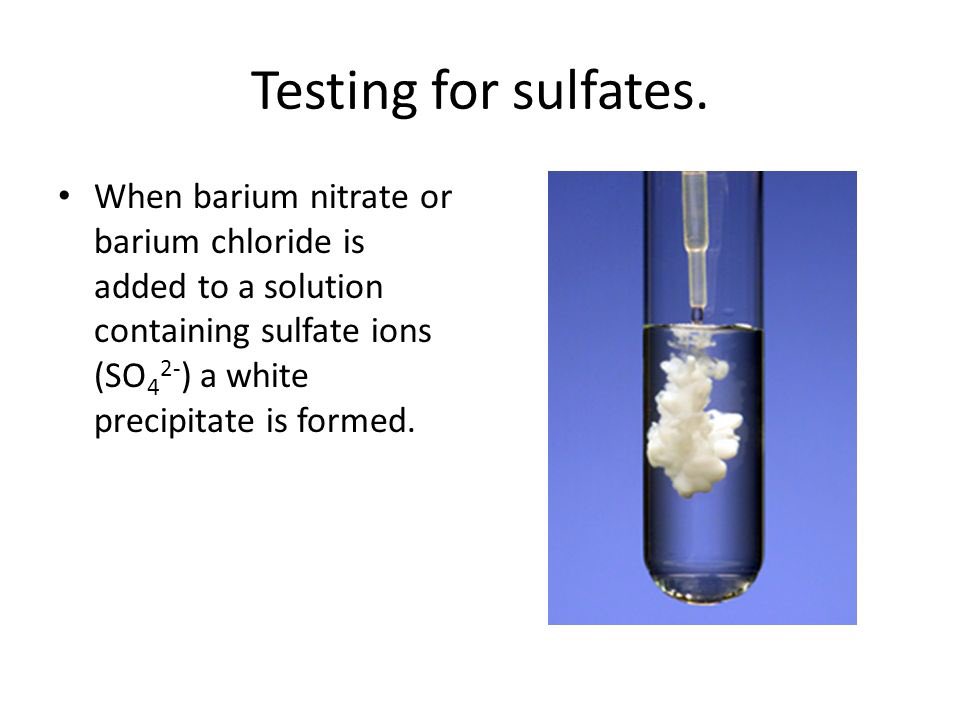
Here is an example of a normal barium swallow study, in which the barium (the dark liquid) is seen moving down the esophagus without any leakage or regurgitation (reflux):
Share on Pinterest
Photo: Anka Friedrich / commons.wikimedia.org
The barium you swallow is artificially flavored and sweetened. However, many people report that it tastes bitter or chalky.
If you have health insurance, a barium swallow may be fully or partially covered. If you don’t have insurance, the procedure may cost between $300 and $450. This covers the costs of your doctor’s time interpreting the X-rays as well as the cost of the technicians who perform the procedure.
If the barium is not completely expelled from your body after the procedure, it can sometimes cause constipation or fecal impaction. You should drink lots of fluids and eat high-fiber foods to help move the barium through your digestive tract and out of your body. If that doesn’t help, your doctor might give you a laxative to help move it through.
After your procedure, you might notice that your bowel movements are lighter in color. This happens because your body doesn’t absorb the barium. Your stool will return to its normal color once all the barium has been expelled.
Be sure to contact your doctor right away if:
- You have trouble having a bowel movement or can’t have a bowel movement.
- You have pain or bloating in your abdomen.
- You have stools that are smaller in diameter than usual.
Also, barium swallows involve exposure to radiation, like all X-ray procedures. The risks of complications related to radiation exposure accumulate over time and are linked to the number of X-ray exams and treatments a person receives in their life. It can be helpful to share a record of past radiation procedures with your doctor before your barium swallow.
Exposure to radiation during pregnancy can cause birth defects in unborn fetuses. Because of this, pregnant women should not undergo barium swallow procedures.
The barium swallow is a less invasive way to look at the upper GI tract than an endoscopy. Barium swallows are a useful diagnostic tool for checking for upper GI tract disorders that can be easily diagnosed with X-ray alone. More complex disorders require endoscopy.
Here’s how to stay comfortable before, during, and after a barium swallow:
Tips
- Wear loose-fitting clothing that’s easy to remove and put back on.
- Remove all jewelry at home before you go in for your procedure.
- Be sure to eat and drink enough the night before your procedure before starting your fast at midnight. It may help to schedule your barium swallow for first thing in the morning so you don’t have to avoid food or drink for too long.
- Be prepared for the barium to taste unpleasant.
- Bring something to eat and drink after your procedure. Foods that are high in fiber — including fruits like apples, bananas, and raspberries — can help prevent constipation as well as get rid of the taste.

- Make sure you drink eight 8-ounce glasses of water a day after your procedure.
Was this helpful?
Last medically reviewed on April 10, 2017
How we reviewed this article:
Healthline has strict sourcing guidelines and relies on peer-reviewed studies, academic research institutions, and medical associations. We avoid using tertiary references. You can learn more about how we ensure our content is accurate and current by reading our editorial policy.
- Barium swallow. (n.d.).Retrieved from
hopkinsmedicine.org/healthlibrary/test_procedures/gastroenterology/barium_swallow_92,P07688/ - Barium swallow (upper gastrointestinal series or “upper GI series”). (2014, June)
health.harvard.edu/digestive-health/barium-swallow-upper-gastrointestinal-series-or-quotupper-gi-seriesquot - Barium swallow study (esophagram). (2017, January)
nationaljewish.org/programs/tests/imaging/barium-swallow-study/ - Mayo Clinic Staff.
 (2015, October 8). Chart of high-fiber foods
(2015, October 8). Chart of high-fiber foods
mayoclinic.org/healthy-lifestyle/nutrition-and-healthy-eating/in-depth/high-fiber-foods/art-20050948 - Upper GI endoscopy. (n.d.)
hopkinsmedicine.org/healthlibrary/test_procedures/gastroenterology/esophagogastroduodenoscopy_92,p07717/
Our experts continually monitor the health and wellness space, and we update our articles when new information becomes available.
Current Version
Apr 22, 2017
Written By
Erica Cirino
Apr 10, 2017
Medically Reviewed By
Graham Rogers, MD
Share this article
Medically reviewed by Graham Rogers, M.D. — By Erica Cirino — Updated on April 22, 2017
Read this next
- Barium Enema
Medically reviewed by Deborah Weatherspoon, Ph.D., MSN
READ MORE
- How to Prepare for an Endoscopy
Medically reviewed by Carissa Stephens, R.N., CCRN, CPN
Learn how to prepare for an upper gastrointestinal (GI) endoscopy.

READ MORE
- What Causes Difficulty in Swallowing?
Medically reviewed by Nicole Leigh Aaronson, MD, MBA, CPE, FACS, FAAP
Swallowing difficulty is the inability to swallow foods or liquids with ease. Learn more about the causes and treatment here.
READ MORE
- What You Should Know About Bleeding Ulcer
Medically reviewed by Deborah Weatherspoon, Ph.D., MSN
A bleeding ulcer requires immediate treatment. Learn more about the warning signs and what to expect during treatment.
READ MORE
- How Endoscopy Is Used to Diagnose and Treat GERD
Upper GI endoscopy can be used to help diagnose GERD. While it’s not ordered in all cases, it may be used if you have atypical symptoms.
READ MORE
- Deciding How Often You Need a Colonoscopy
Medically reviewed by Saurabh Sethi, M.D., MPH
If your health is generally good, you’ll need a colonoscopy less frequently than if you have a family history of some cancers or bowel diseases.

READ MORE
- What to Eat After Colonoscopy
Not sure what to eat after a colonoscopy? Here’s a list of foods to eat and to avoid after a colonoscopy. We’ll also share best practices for keeping…
READ MORE
- What is an ERCP Procedure?
Medically reviewed by Saurabh Sethi, M.D., MPH
An ERCP procedure can be an important step in diagnosing and treating certain digestive disorders. Learn more about how it’s used for gallstones and…
READ MORE
- Everything You Need to Know Before a Fecal Occult Blood Test
Medically reviewed by Cynthia Taylor Chavoustie, MPAS, PA-C
Fecal occult blood tests are used to detect small particles of blood in your stool. This can help diagnose colorectal cancer or a variety of other…
READ MORE
- What’s the Difference Between Magnetic Resonance and Endoscopic Retrograde Cholangiopancreatography?
Medically reviewed by Saurabh Sethi, M.D., MPH
ERCP and MRCP are used to diagnose problems with the bile and pancreatic ducts.
 ERCP is more invasive, but it can help treat certain conditions.
ERCP is more invasive, but it can help treat certain conditions.READ MORE
What to Expect, Side Effects, and Cost
Barium Swallow: What to Expect, Side Effects, and Cost
- Health Conditions
- Featured
- Breast Cancer
- IBD
- Migraine
- Multiple Sclerosis (MS)
- Rheumatoid Arthritis
- Type 2 Diabetes
- Articles
- Acid Reflux
- ADHD
- Allergies
- Alzheimer’s & Dementia
- Bipolar Disorder
- Cancer
- Crohn’s Disease
- Chronic Pain
- Cold & Flu
- COPD
- Depression
- Fibromyalgia
- Heart Disease
- High Cholesterol
- HIV
- Hypertension
- IPF
- Osteoarthritis
- Psoriasis
- Skin Disorders and Care
- STDs
- Featured
- Discover
- Wellness Topics
- Nutrition
- Fitness
- Skin Care
- Sexual Health
- Women’s Health
- Mental Well-Being
- Sleep
- Product Reviews
- Vitamins & Supplements
- Sleep
- Mental Health
- Nutrition
- At-Home Testing
- CBD
- Men’s Health
- Original Series
- Fresh Food Fast
- Diagnosis Diaries
- You’re Not Alone
- Present Tense
- Video Series
- Youth in Focus
- Healthy Harvest
- No More Silence
- Future of Health
- Wellness Topics
- Plan
- Health Challenges
- Mindful Eating
- Sugar Savvy
- Move Your Body
- Gut Health
- Mood Foods
- Align Your Spine
- Find Care
- Primary Care
- Mental Health
- OB-GYN
- Dermatologists
- Neurologists
- Cardiologists
- Orthopedists
- Lifestyle Quizzes
- Weight Management
- Am I Depressed? A Quiz for Teens
- Are You a Workaholic?
- How Well Do You Sleep?
- Tools & Resources
- Health News
- Find a Diet
- Find Healthy Snacks
- Drugs A-Z
- Health A-Z
- Health Challenges
- Connect
- Breast Cancer
- Inflammatory Bowel Disease
- Psoriatic Arthritis
- Migraine
- Multiple Sclerosis
- Psoriasis
Medically reviewed by Graham Rogers, M. D. — By Erica Cirino — Updated on April 22, 2017
D. — By Erica Cirino — Updated on April 22, 2017
What is a barium swallow?
A barium swallow is a special type of X-ray test that helps your doctor take a close look at the back of your mouth and throat, known as the pharynx, and the tube that extends from the back of the tongue down to the stomach, known as the esophagus.
Your doctor may ask you to do a barium swallow to help diagnose any conditions that make it difficult for you to swallow or if they suspect that you have a disorder of the upper gastrointestinal (GI) tract. Your upper GI tract includes:
- the esophagus
- the stomach
- the first part of the small intestine, called the duodenum
To do a barium swallow, you swallow a chalky white substance known as barium. It’s often mixed with water to make a thick drink that looks like a milkshake. When it’s swallowed, this liquid coats the inside of your upper GI.
Barium absorbs X-rays and looks white on X-ray film. This helps highlight these organs, as well as their inside linings and the motion of your swallowing, on the X-ray image. These images help your doctor diagnose any disorders of the GI tract.
These images help your doctor diagnose any disorders of the GI tract.
Your doctor may order a barium swallow to help diagnose a possible structural or functional problem with your upper GI tract. Some common problems that a barium swallow may help diagnose include:
- hiatal hernia
- inflammation
- blockages
- muscle disorders that could lead to difficulty swallowing or spasms
- gastroesophageal reflux disease (GERD)
- ulcers
- both cancerous and noncancerous tumors
Sometimes a barium swallow is done as part of a series of X-rays that look at the whole upper GI tract. A continuous X-ray beam, called a fluoroscopy, is often used during a barium swallow to capture movement through your GI tract.
A common test that accompanies the barium swallow is the upper GI endoscopy, also known as an esophagogastroduodenoscopy, or EGD. Barium swallows are also often done as part of an upper GI and small bowel series of tests.
It’s important to follow the dietary guidelines your doctor gives you before your procedure. You are not supposed to eat or drink anything for six hours before your procedure. You may take small sips of water up until two hours before your procedure.
You are not supposed to eat or drink anything for six hours before your procedure. You may take small sips of water up until two hours before your procedure.
If you are getting additional tests done or have any existing medical conditions, the directions your doctor gives you may be slightly different. You should notify your doctor before your procedure if you have or have had any of the following conditions:
- an esophageal or bowel perforation
- bowel obstruction
- difficulty swallowing
- severe constipation
These conditions may disqualify you from doing a barium swallow, as they increase the risk of complications.
Your doctor will direct you to your local radiology facility for your barium swallow. A trained radiology technician will perform the procedure. From start to finish, a barium swallow takes about 30 minutes. You will get your results within several days of your procedure.
Once you’re at the radiology facility, you will be asked to remove your clothing and jewelry and secure your belongings in a locker. You’ll change into a medical gown provided by your doctor.
You’ll change into a medical gown provided by your doctor.
Your technician will position you on an X-ray table. They may ask you to move your body position as they take standard X-rays of your heart, lungs, and abdomen.
Then, your technician will give you a barium drink to swallow. They will take single X-rays, a series of X-rays, or a fluoroscopy to watch how the barium moves through your pharynx. You might have to hold your breath at certain times to prevent any movement from disrupting the X-ray images.
Next, the technician will give you a thinner barium drink to swallow. They will again take X-rays or a fluoroscopy to watch how the barium moves down the esophagus.
When all X-rays are complete, you can gather your things and leave. You can go back to your normal diet and daily activities after your barium swallow procedure unless your doctor advises otherwise.
Your doctor’s office will be in touch within a few days to go over the results of your test and to schedule any follow-ups that may be needed.
Here is an example of a normal barium swallow study, in which the barium (the dark liquid) is seen moving down the esophagus without any leakage or regurgitation (reflux):
Share on Pinterest
Photo: Anka Friedrich / commons.wikimedia.org
The barium you swallow is artificially flavored and sweetened. However, many people report that it tastes bitter or chalky.
If you have health insurance, a barium swallow may be fully or partially covered. If you don’t have insurance, the procedure may cost between $300 and $450. This covers the costs of your doctor’s time interpreting the X-rays as well as the cost of the technicians who perform the procedure.
If the barium is not completely expelled from your body after the procedure, it can sometimes cause constipation or fecal impaction. You should drink lots of fluids and eat high-fiber foods to help move the barium through your digestive tract and out of your body. If that doesn’t help, your doctor might give you a laxative to help move it through.:max_bytes(150000):strip_icc()/4157830_color1-5bbd1c23c9e77c0051e043e2.png)
After your procedure, you might notice that your bowel movements are lighter in color. This happens because your body doesn’t absorb the barium. Your stool will return to its normal color once all the barium has been expelled.
Be sure to contact your doctor right away if:
- You have trouble having a bowel movement or can’t have a bowel movement.
- You have pain or bloating in your abdomen.
- You have stools that are smaller in diameter than usual.
Also, barium swallows involve exposure to radiation, like all X-ray procedures. The risks of complications related to radiation exposure accumulate over time and are linked to the number of X-ray exams and treatments a person receives in their life. It can be helpful to share a record of past radiation procedures with your doctor before your barium swallow.
Exposure to radiation during pregnancy can cause birth defects in unborn fetuses. Because of this, pregnant women should not undergo barium swallow procedures.
The barium swallow is a less invasive way to look at the upper GI tract than an endoscopy. Barium swallows are a useful diagnostic tool for checking for upper GI tract disorders that can be easily diagnosed with X-ray alone. More complex disorders require endoscopy.
Here’s how to stay comfortable before, during, and after a barium swallow:
Tips
- Wear loose-fitting clothing that’s easy to remove and put back on.
- Remove all jewelry at home before you go in for your procedure.
- Be sure to eat and drink enough the night before your procedure before starting your fast at midnight. It may help to schedule your barium swallow for first thing in the morning so you don’t have to avoid food or drink for too long.
- Be prepared for the barium to taste unpleasant.
- Bring something to eat and drink after your procedure. Foods that are high in fiber — including fruits like apples, bananas, and raspberries — can help prevent constipation as well as get rid of the taste.

- Make sure you drink eight 8-ounce glasses of water a day after your procedure.
Was this helpful?
Last medically reviewed on April 10, 2017
How we reviewed this article:
Healthline has strict sourcing guidelines and relies on peer-reviewed studies, academic research institutions, and medical associations. We avoid using tertiary references. You can learn more about how we ensure our content is accurate and current by reading our editorial policy.
- Barium swallow. (n.d.).Retrieved from
hopkinsmedicine.org/healthlibrary/test_procedures/gastroenterology/barium_swallow_92,P07688/ - Barium swallow (upper gastrointestinal series or “upper GI series”). (2014, June)
health.harvard.edu/digestive-health/barium-swallow-upper-gastrointestinal-series-or-quotupper-gi-seriesquot - Barium swallow study (esophagram). (2017, January)
nationaljewish.org/programs/tests/imaging/barium-swallow-study/ - Mayo Clinic Staff.
 (2015, October 8). Chart of high-fiber foods
(2015, October 8). Chart of high-fiber foods
mayoclinic.org/healthy-lifestyle/nutrition-and-healthy-eating/in-depth/high-fiber-foods/art-20050948 - Upper GI endoscopy. (n.d.)
hopkinsmedicine.org/healthlibrary/test_procedures/gastroenterology/esophagogastroduodenoscopy_92,p07717/
Our experts continually monitor the health and wellness space, and we update our articles when new information becomes available.
Current Version
Apr 22, 2017
Written By
Erica Cirino
Apr 10, 2017
Medically Reviewed By
Graham Rogers, MD
Share this article
Medically reviewed by Graham Rogers, M.D. — By Erica Cirino — Updated on April 22, 2017
Read this next
- Barium Enema
Medically reviewed by Deborah Weatherspoon, Ph.D., MSN
READ MORE
- How to Prepare for an Endoscopy
Medically reviewed by Carissa Stephens, R.N., CCRN, CPN
Learn how to prepare for an upper gastrointestinal (GI) endoscopy.

READ MORE
- What Causes Difficulty in Swallowing?
Medically reviewed by Nicole Leigh Aaronson, MD, MBA, CPE, FACS, FAAP
Swallowing difficulty is the inability to swallow foods or liquids with ease. Learn more about the causes and treatment here.
READ MORE
- What You Should Know About Bleeding Ulcer
Medically reviewed by Deborah Weatherspoon, Ph.D., MSN
A bleeding ulcer requires immediate treatment. Learn more about the warning signs and what to expect during treatment.
READ MORE
- How Endoscopy Is Used to Diagnose and Treat GERD
Upper GI endoscopy can be used to help diagnose GERD. While it’s not ordered in all cases, it may be used if you have atypical symptoms.
READ MORE
- Deciding How Often You Need a Colonoscopy
Medically reviewed by Saurabh Sethi, M.D., MPH
If your health is generally good, you’ll need a colonoscopy less frequently than if you have a family history of some cancers or bowel diseases.

READ MORE
- What to Eat After Colonoscopy
Not sure what to eat after a colonoscopy? Here’s a list of foods to eat and to avoid after a colonoscopy. We’ll also share best practices for keeping…
READ MORE
- What is an ERCP Procedure?
Medically reviewed by Saurabh Sethi, M.D., MPH
An ERCP procedure can be an important step in diagnosing and treating certain digestive disorders. Learn more about how it’s used for gallstones and…
READ MORE
- Everything You Need to Know Before a Fecal Occult Blood Test
Medically reviewed by Cynthia Taylor Chavoustie, MPAS, PA-C
Fecal occult blood tests are used to detect small particles of blood in your stool. This can help diagnose colorectal cancer or a variety of other…
READ MORE
- What’s the Difference Between Magnetic Resonance and Endoscopic Retrograde Cholangiopancreatography?
Medically reviewed by Saurabh Sethi, M.D., MPH
ERCP and MRCP are used to diagnose problems with the bile and pancreatic ducts.
 ERCP is more invasive, but it can help treat certain conditions.
ERCP is more invasive, but it can help treat certain conditions.READ MORE
Gastroscopy and Colonoscopy
Gastroscopy and Colonoscopy – These are procedures for examining the human gastrointestinal tract, using endoscopes – video devices that display images on the doctor’s screen, which allows you to find and determine the focus of the disease with high accuracy and perform a biopsy, if necessary.
Any procedure can be performed under sedation or anesthesia without pain, fear and other possible discomfort.
What is EFGDS?
Esophagogastroduodenoscopy (EFGDS) is a highly informative endoscopic examination, during which the state of the upper gastrointestinal tract is visually assessed, that is, under visual control.
The study is performed with a flexible endoscope – a video gastroscope. The illuminator operating on a halogen lamp serves as a light source, that is, the so-called “cold light” is used, which excludes burns of the mucous membrane of the examined departments.
During esophagogastroduodenoscopy, the following departments are examined:
The esophagus, stomach, duodenal bulb, descending duodenum, and the region of the major duodenal papilla (the area where the pancreatic duct and bile ducts open into the lumen of the duodenum 12).
Sometimes an X-ray examination of the esophagus and stomach is performed before EFGDS.
Endoscopic examination of the stomach can be performed the next day.
If YOU have a violation of the evacuation function of the esophagus and stomach (difficulty in the passage of food through these departments), the date of the EFGDS should be agreed with the attending physician.
What happens during EFGDS?
Endoscopic examination of the upper gastrointestinal tract is a rather technically complex procedure, so try to help your doctor and nurse as much as possible – strictly follow their instructions.
You may experience discomfort during the examination, however, the doctor will take all measures to reduce these unpleasant sensations, in many respects following the instructions can reduce discomfort.
You will be anesthetized in the throat with a mild anesthetic (usually lidocaine) to reduce discomfort during the procedure.
If you have an intolerance to the drugs used for anesthesia, be sure to notify the doctor conducting the study about this.
You will need to remove (tie) or unbutton (shirt collar) any clothing that may make it difficult to breathe during the exam or may be stained with saliva.
If you have dentures that do not fit well in your mouth, you need to remove them.
You will be helped to lie down on the diagnostic table in the position “on the left side”, the legs should be slightly bent at the knees, the left arm in the right axillary region, the right one along the body.
To conduct the device, a special mouthpiece will be placed in your mouth, which you need to hold during the examination with your lips and teeth.
The endoscope is inserted through the mouth into the lumen of the pharynx and, during a swallowing movement, is passed into the lumen of the esophagus, gradually moving into the underlying sections of the gastrointestinal tract with moderate air supply to straighten the lumen of the examined organs.
In some pathological conditions, to clarify the diagnosis, a microscopic examination of the altered sections of the mucous membrane is necessary, which the doctor takes with special forceps – a biopsy is performed (absolutely painless), which slightly lengthens the examination time.
Study duration 5 to 15 minutes.
What is a colonoscopy?
Colonoscopy is a highly informative endoscopic examination, during which the condition of the large intestine is assessed visually, that is, under visual control.
If necessary, the final section of the small intestine can be examined.
The study is performed with a flexible endoscope – a video colonoscope. The illuminator operating on a halogen lamp serves as a light source, that is, the so-called “cold light” is used, which excludes burns of the intestinal mucosa.
The large intestine consists of the anus, rectum – sigmoid – descending – transverse colon – ascending – caecum.
Sometimes, before a colonoscopy, an x-ray examination of the colon is performed – irrigoscopy. Endoscopic examination can be performed no earlier than 3 days after irrigoscopy or x-ray examination of the stomach with barium.
What will happen during a colonoscopy?
Endoscopic examination of the colon is a rather technically complex procedure, so try to help your doctor and nurse as much as possible – strictly follow their instructions. You may experience discomfort during the examination (in the examination without anesthesia), however, the doctor will take all measures to reduce these unpleasant sensations, in many respects following the instructions can reduce discomfort.
You will be required to remove all clothing below the waist, including underwear. In the treatment room, you will be asked to change into disposable surgical clothing.
You will be helped to lie down on the examination table in the “on your left side” position, your legs should be bent at the knees and pulled up to your stomach.
The endoscope is inserted through the anus into the lumen of the rectum and gradually moves into the overlying sections of the colon with moderate air supply to straighten the lumen of the intestine. During the examination, at the direction of the doctor, you will be helped to turn on your back or again on your left or right side.
In some pathological conditions, to clarify the diagnosis, a microscopic examination of the altered sections of the mucous membrane is necessary, which the doctor takes with special forceps – a biopsy is performed (absolutely painless), which slightly lengthens the examination time.
The duration of the study is from 20 to 60 minutes, depending on the anatomical features of the large intestine (adhesions in the abdominal cavity, additional intestinal loops, etc.)
How much does it hurt?
We will not say that endoscopy is a painless and invisible procedure for the patient. Especially if it is performed only with the use of a local anesthetic. However, our specialists try to carry it out as quickly as possible without losing the quality of the examination.
Especially if it is performed only with the use of a local anesthetic. However, our specialists try to carry it out as quickly as possible without losing the quality of the examination.
Also, in the Babyboom clinic, you can perform EGDS and colonoscopy under anesthesia or sedation. Then any discomfort during the procedure is minimized. The patient will have no memory of the process.
Sedation is used to remove anxiety, fear and tension, while maintaining physiological reflexes. During anesthesia, the patient is immersed in a completely unconscious state in which there is a complete shutdown of consciousness. At the same time, the activity of the central nervous system is reduced to the maximum, which is accompanied by a complete absence of pain, any reaction to irritating factors and partial elimination of reflexes.
Is anesthesia harmful?
Let’s start with the fact that each individual case of the use of anesthesia or sedation is examined by the doctor individually, the anesthesiologist-resuscitator will meet with you to collect important information about your state of health and prescribe the necessary examination. The doctor determines the need for anesthesia or sedation, determines which type of anesthesia will be preferred (sedation or anesthesia), what types of drugs will be used.
The doctor determines the need for anesthesia or sedation, determines which type of anesthesia will be preferred (sedation or anesthesia), what types of drugs will be used.
The anesthesia team controls the depth of anesthesia. This eliminates the possibility of waking up during surgery, feeling pain, or receiving more than necessary anesthetic. Continuous monitoring is carried out: pulse, blood saturation with oxygen, carbon dioxide, blood pressure ECG, etc.
We work only on the most sparing ultra-short-acting drugs used by world experts in the fields of anesthesiology: Propafol, Sevoran, Midazolam, in order to minimize all possible side effects during and after the procedure. Ultra-short action implies a constant supply of the drug. When the supply is stopped, the patient needs a minimum time to regain consciousness, due to this, the side effects from such drugs are minimal.
Which drugs for anesthesia and sedation do we use:
For sleep treatments, we use only anesthetics with proven safety, which is confirmed by many studies.
When conducting sedation in our clinic, intravenous drugs are used – Midazolam and Propofol.
When conducting combined anesthesia, we use Propofol and Sevoran.
Often, the damage of possible psychological trauma from an unpleasant and painful procedure is much greater than the residual or side effects from sedation or anesthesia. We will not expose you to unreasonable risks: if contraindications to anesthesia are found, we will postpone treatment until the patient’s health condition returns to normal.
How long do the procedures take?
EFGDS without anesthesia and sedation lasts on average from 5 to 15 minutes;
EFGDS with anesthesia or sedation from 25 to 30 minutes;
Colonoscopy without anesthesia and sedation lasts about 30 minutes on average;
Colonoscopy with anesthesia or sedation about 45 minutes.
Larisa Berman: From the notes of a speech therapist.
 Wrong throat hit
Wrong throat hit
Published:
January 29, 2016
Larisa Berman New York, USA |
Headings:
Health
The patient was brought to our hospital straight from work, where he suddenly lost consciousness and did not recover for a long time.
Having skimmed through his case history “…Donald N., 72, Dz: Aspiration Pneumonia…”, and not seeing any traces of chronic diseases leading to the appearance of speech therapy problems – speech, intellect or swallowing disorders, I began my routine morning round.
Don turned out to be an unusually charming person.
— What are you complaining about?
— General weakness and too many beautiful women around.
– Any swallowing problems?
— Oh no! Normal swallowing and excellent appetite is perhaps my greatest privilege in life.
— Do you have a cough while eating?
— Oh, doctor! I am a healthy man.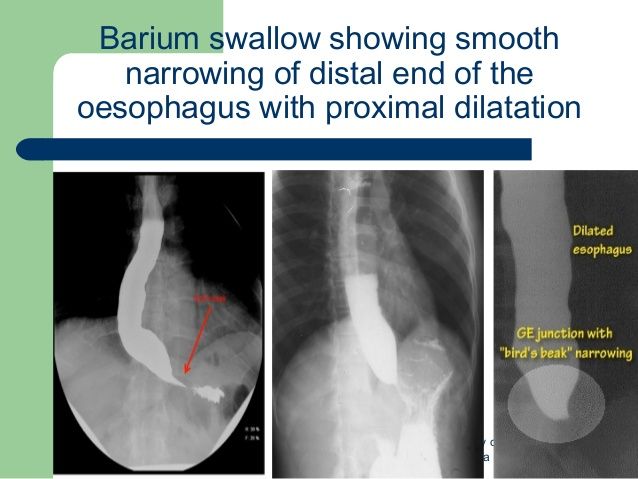 I eat well, drink well and love women.
I eat well, drink well and love women.
So, no complaints, no obvious signs of swallowing problems. And only professional intuition acquired over the years, and perhaps even a barely perceptible hoarseness in my voice, told me that something was wrong.
Thinking through the entire arsenal of diagnostic tests, I settled on the study of swallowing with barium mixture – a special test that allows you to track the progress of chewed food. A few hours later, Don was taken to the procedure.
He left with full confidence in the uselessness of this test, but agreed, as if yielding to my whim. “Double for dinner, doctor,” he joked as he left his room. Soon I was called to the X-ray department.
The test was started and immediately stopped because all the liquid he drank went directly into the lungs, and not into the esophagus, and already at the beginning of the procedure both lungs were filled with barium solution.
Don was lying on the table, white as a sheet, still not believing his ears and not wanting to sign the paper required for the operation. Unfortunately, I was not mistaken, he had a severe swallowing disorder, accompanied by the absence of a cough reflex, which was confirmed by his diagnosis – pneumonia (hidden aspiration).
Unfortunately, I was not mistaken, he had a severe swallowing disorder, accompanied by the absence of a cough reflex, which was confirmed by his diagnosis – pneumonia (hidden aspiration).
A few hours later, Donald was transferred to the surgical department, where he was surgically inserted G-tube. He returned to his room at the end of the day, pale, exhausted, aged for a day, probably ten years.
How is that? Don wondered. Yesterday I was a healthy person; ate, drank, could go to restaurants, have picnics. And now, I am a disabled person connected to the network. How to live on? How to proceed? What to do with my girlfriend? Why am I like this, with a tube in my stomach? But there was no answer to all his anxious questions.
– Don, trust me, I will do my best to restore your ability to eat naturally again. But I do not give guarantees.
We started working. Don was a diligent and diligent patient who strictly carried out all my prescriptions and recommendations, gratefully accepted all types of treatment.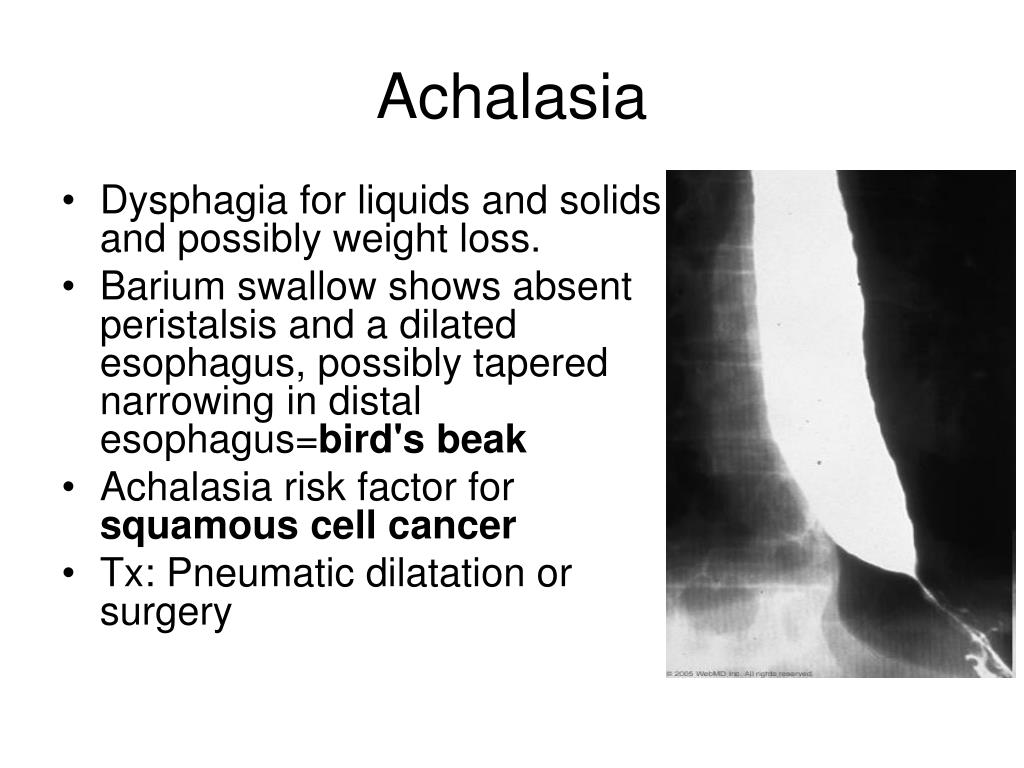 But even intensive therapy, including electrical stimulation of the swallowing nerve, did not bring the desired improvement.
But even intensive therapy, including electrical stimulation of the swallowing nerve, did not bring the desired improvement.
The results of the x-ray examination of the act of swallowing, which I carried out every two weeks, were one worse than the other. The chief radiologist of the hospital demanded an immediate halt to the repeated tests, fearing for the level of radiation. The clinical director daily called me to the “carpet” and insisted on the discharge of the patient. And only our good old neurologist, Dr. Volk, whom we called “Vitamin B” behind our backs, since he prescribed it to all patients without exception, began each morning meeting with the words: “Larisa, keep going! I like successful cases.
Day after day, Don and I continued to fight the disease, winning more and more positions from it. Donald became the center of everyone’s attention. Around his name there were constantly professional debates, forecasts and conjectures were made. Our therapy did not always give us joy, there were many failures and complications. At first, even pureed baby food mixtures settled in the vocal cords, causing wheezing and voice changes. But gradually, sip by sip…
At first, even pureed baby food mixtures settled in the vocal cords, causing wheezing and voice changes. But gradually, sip by sip…
Don learned to eat again. At 72, he, like a child, trained to chew food thoroughly, swallow slowly, using special techniques that compensate for the swallowing defect.
Hope and faith walked side by side every day and every hour, never leaving us for a single minute. Perhaps this was one of the reasons for our success.
Several months have passed … Today Don ate his first breakfast on his own, crying and laughing like a child: “Good, good!” and tears streamed down his cheeks.
Our entire squad, with bated breath, followed his every sip. And after some time, the G-tube was removed and Donald, having acquired the former status of a healthy person, returned to his usual life.
Now he could eat and drink anything without any restrictions or special tricks. Don’s discharge was a real treat for all of us. He left the hospital, never tired of repeating the same thing: “Thank you, thank you . .. It was God who sent you to me.”
.. It was God who sent you to me.”
Swallowing disorders as a common problem are relatively new. More recently, we knew little and cared about her. In the mid-eighties, a book by J. Logemann on swallowing disorders appeared on the bookshelves of America. It is difficult to say how fast the disease spreads around the globe, but after a few years dysphagia becomes so topical that leading universities and clinics in America, Europe and Asia begin to conduct numerous scientific studies in the field of swallowing.
Over the years, the disease becomes much more vicious and aggressive, absorbing an increasing number of victims. Today in America there are more than ten thousand deaths each year from choking while eating, when food enters the windpipe, completely blocking the access of air. There are a lot of reasons for swallowing problems. These can be various genetic syndromes, injuries, infectious diseases, inflammatory processes, as well as side effects of drugs. But most often, swallowing disorders are associated with diseases such as Parkinson’s, Alzheimer’s, Asthma, and, of course, stroke.
The majority of post-stroke patients in the first days of the disease suffer from a serious swallowing defect, and first of all, this applies to liquids. It is water, which is so necessary for our body, that causes a strong cough or suffocation in patients, because the swallowing reflex works very late due to a violation of the innervation of the swallowing muscles.
The muscles of the tongue are so weak that it can barely move, with difficulty manipulating and pushing poorly chewed food into the esophagus. Since the peristalsis of the esophagus is also impaired, food particles get stuck in different parts of the alimentary tract, causing a feeling of heaviness, pain or difficulty breathing, and getting into the lungs, leading to severe pneumonia.
Eating begins to lose its meaning, causing more discomfort than pleasure. Patients try to eat less, refuse to drink fluids, which leads to weight loss and complete dehydration. Suppressed by the disease, the body ceases to resist, becomes more fragile and susceptible to infections and viruses.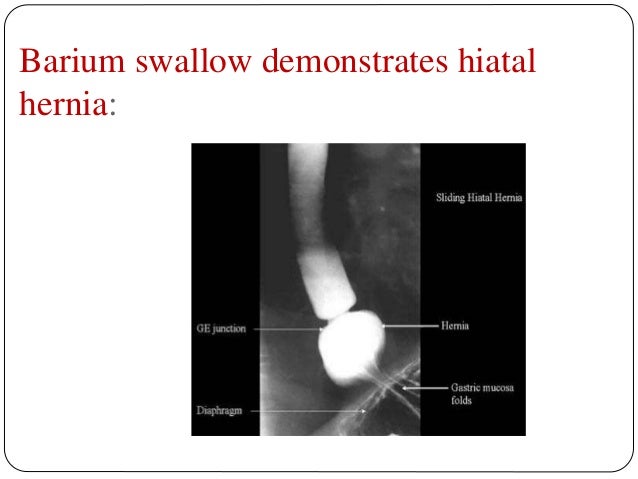 Then you have to resort to artificial nutrition. A special catheter (G-tube feeding) is surgically inserted into the patient’s stomach area, a nutrient solution is poured into it, which supports the vital activity of the organism.
Then you have to resort to artificial nutrition. A special catheter (G-tube feeding) is surgically inserted into the patient’s stomach area, a nutrient solution is poured into it, which supports the vital activity of the organism.
The first symptom of impending trouble is coughing while eating. Usually patients find their own explanations for this phenomenon: a cold, an allergy, “the wrong throat.” A cough, like an annoying fly, flies to the smell of food and accompanies every sip.
But it also has a positive effect, being, as it were, a protective reflex, partially freeing the airways from food residues and preventing them from entering the lungs. It is much more dangerous when the patient’s cough reflex is impaired or completely lost. Violation of swallowing does not give any visible signals, the person continues to eat as usual, not understanding where the pneumonia came from.
Age is also a critical factor in swallowing disorders. Because, over the years, all the functions of our body change, including the swallowing mechanism. Muscles weaken, coordination of their movement is disturbed. Lost teeth or uncomfortable dentures reduce the ability to chew food. Years of accumulated diseases require the intake of a large number of medications. And medications tend to have side effects that cause swallowing problems.
Muscles weaken, coordination of their movement is disturbed. Lost teeth or uncomfortable dentures reduce the ability to chew food. Years of accumulated diseases require the intake of a large number of medications. And medications tend to have side effects that cause swallowing problems.
Today, there are about 160 various medications on the American market that directly or indirectly affect the swallowing process. First of all, these are antidepressants and psychotropic drugs that cause a change in the tone of the muscles of the face, tongue, jaws or larynx, provoking spasm or involuntary twitching of the muscles of the swallowing apparatus and making it difficult to swallow.
Many psychotropic drugs block salivation and contribute to increased dryness in the mouth, larynx, and esophagus. Patients try to drink more, but water relieves these symptoms for only a few minutes. And the promotion and sliding of food on a dry surface is much more difficult. Food debris sticks to the dry palate, the back of the tongue, the walls of the larynx and esophagus, causing a cough, which begins the problem of swallowing.

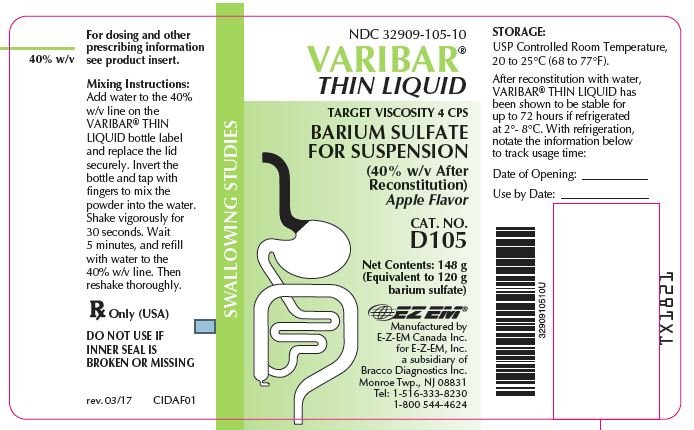
 (2015, October 8). Chart of high-fiber foods
(2015, October 8). Chart of high-fiber foods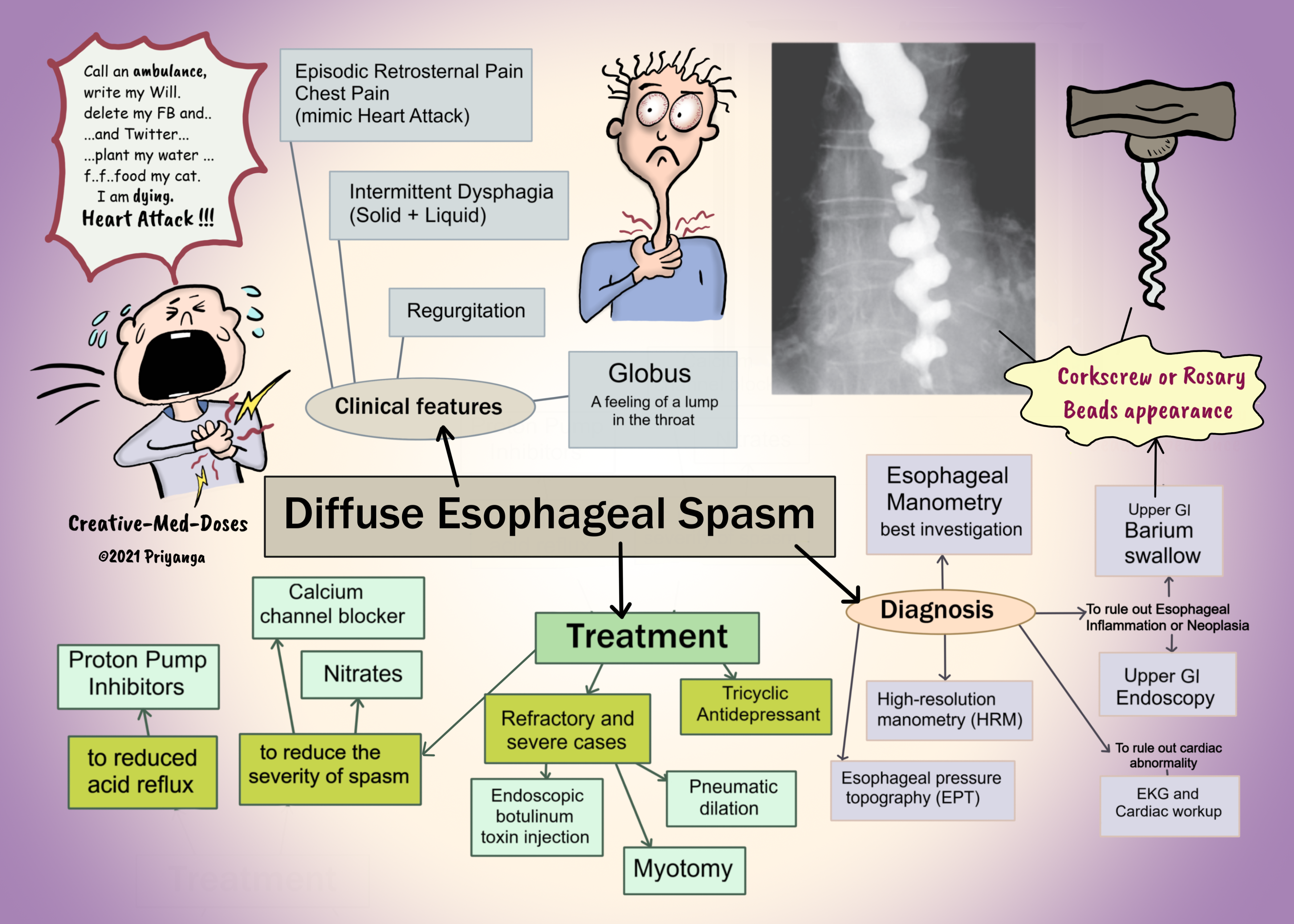

:max_bytes(150000):strip_icc():format(webp)/3156932_color-5bae4a3546e0fb00262c8c4d.png) ERCP is more invasive, but it can help treat certain conditions.
ERCP is more invasive, but it can help treat certain conditions.
 (2015, October 8). Chart of high-fiber foods
(2015, October 8). Chart of high-fiber foods
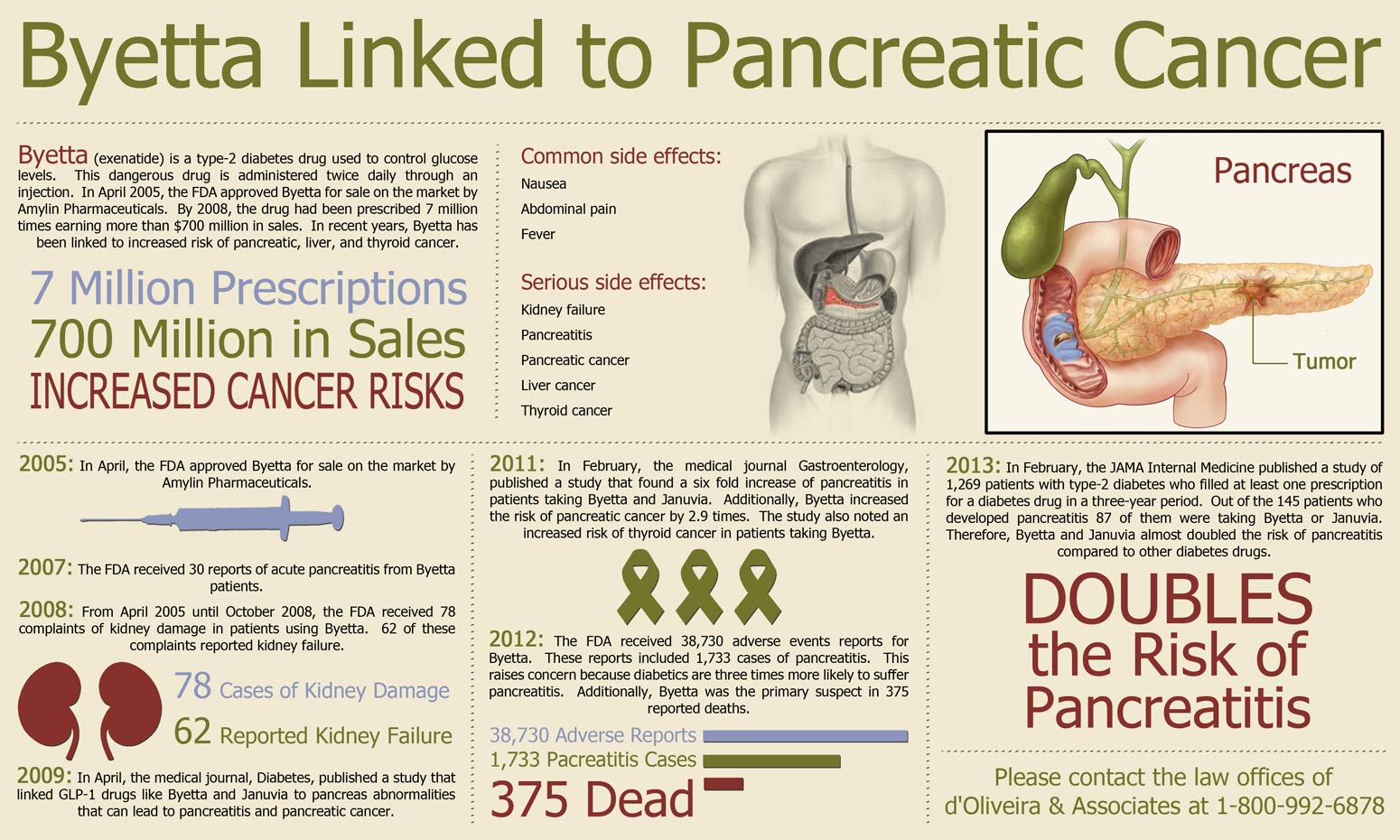
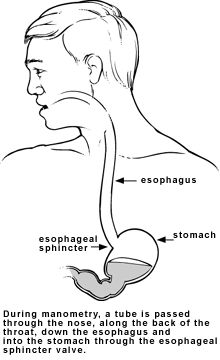 ERCP is more invasive, but it can help treat certain conditions.
ERCP is more invasive, but it can help treat certain conditions.